
Conversation

🥳 Feedback Received!
Thanks for taking a moment to share your thoughts — it genuinely helps us make each chapter sharper.
What happens next:
- Your feedback goes straight to our product team.
- We’ll use it to refine lessons, clarify examples, and make the program even more useful.
Appreciate you helping make this program better for everyone.
Ready for your next challenge? 👇
User-Generated Content
Instead of using in-house employees or contractors to create content, this strategy mostly depends on a company’s users.
There are two types of user-generated content (UGC):
- SEO-focused: Users create content about a brand in relation to topics with high search volume, e.g., product or company reviews.
- Virality-focused: Users create content about a brand in such a way that piques other people’s interest and gets them to share.
Regardless of what type it is, brands leverage UGC for their marketing strategies, e.g., by incorporating it in their email campaigns. In this way, successful UGC strategies are made up of two parts:
- Encouraging users to create content about your brand
- Leveraging this content for marketing campaigns
Again, UGC strategies are more product-dependent compared to editorial content strategies. While we cover some tactics below, our program doesn't include projects for this content marketing approach.
What does excellent content look like?
UGC varies widely, so excellence doesn’t fit a single mold. Instead, it’s most successful when it builds consumer trust.
Because of this, great UGC is best defined by authenticity—that is, how honest or realistic does a piece of content seem to be?
The more authentic, the better, because UGC that seems fake leads to skepticism.
How to encourage UGC
Adobe is an example of a company where users naturally create content through its product, but not all companies have a product that does this. To encourage UGC, try these four tactics:
- Create targeted hashtags.
- Host contests and giveaways.
- Incentivize customers to leave reviews.
- Make your review process frictionless.
Create targeted hashtags.
Hashtags invite UGC and increase your brand’s chances of being discovered on social media. They can be easily included in marketing campaigns for a variety of purposes:
- Events
- Promotions
- Contests and giveaways
- Product launches
- Recruiting
Hashtags also consolidate UGC in one place, creating a library of content for your brand to pull from.
For instance, Canva encourages users to share their design creations and tag #canvalove on Instagram.
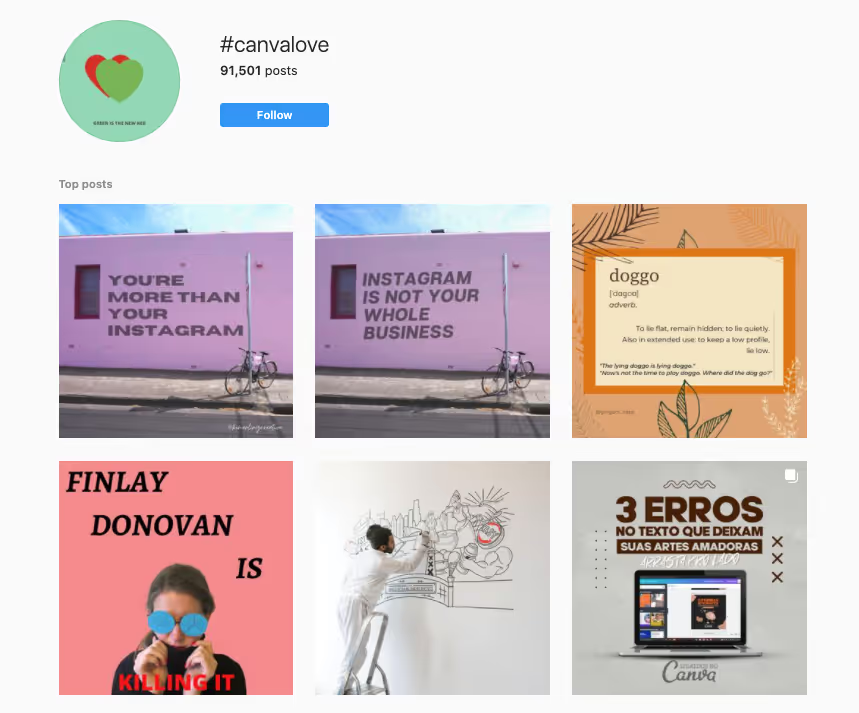
Wayfair encourages customers to share their home decor photos and tag #wayfairathome on Instagram.
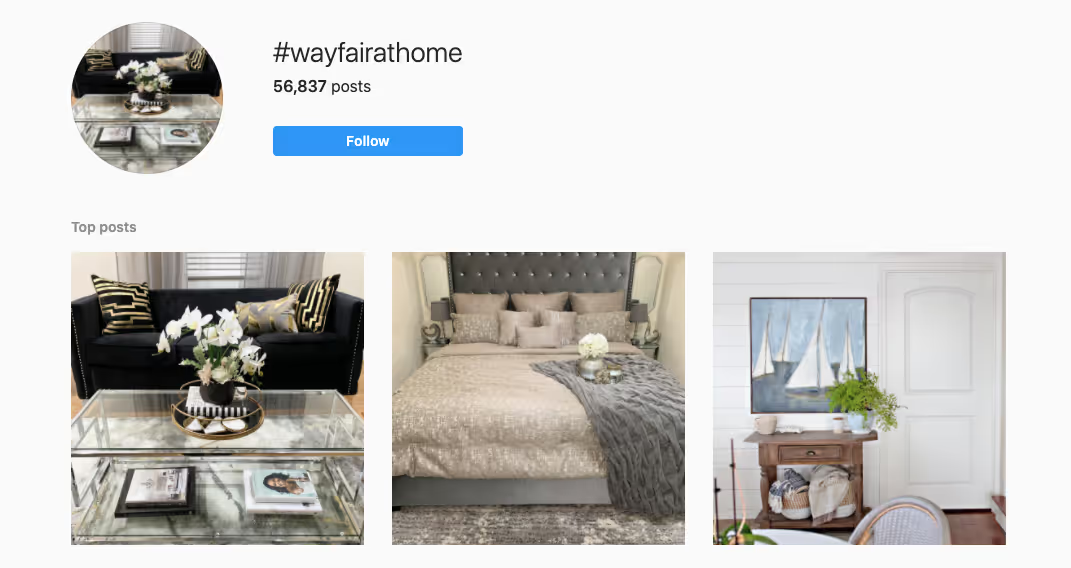
To create an effective hashtag:
- Decide on its main goal. Is it to promote a giveaway, build a community, or something else?
- Pick which social network to focus on. Instagram UGC is image-based, while Twitter mostly uses text. Decide which platform best fits your hashtag goal. (It’s also okay to use the same hashtag across multiple platforms.)
- Make it short and unique. Long hashtags are hard to remember and tag correctly. Generic hashtags are also hard to remember and risk being used for other brands’ campaigns.
Good hashtags can be either branded or unbranded. While branded hashtags obviously relate to your company, unbranded hashtags are a chance to connect with trends, movements, and emotion for more engagement.
Coursera uses #LearnWithoutLimits to encourage new and returning students in their education journey.

HydroFlask uses #ParksForAll to support park restoration and #HeyLetsGo to inspire outdoor adventures.

Slack used #ReinventWork to encourage discussion about workplace changes resulting from the coronavirus pandemic.

Experiment with all three and see what works for your company.
Host contests and giveaways.
On its own, a catchy hashtag can inspire some users to create content. But you can incentivize more users by hosting a contest or giveaway that requires UGC for participation.
Mobile game company Niantic did this with its #SustainableWithNiantic campaign, which offered in-game rewards for people who shared about doing work for sustainability on social media.
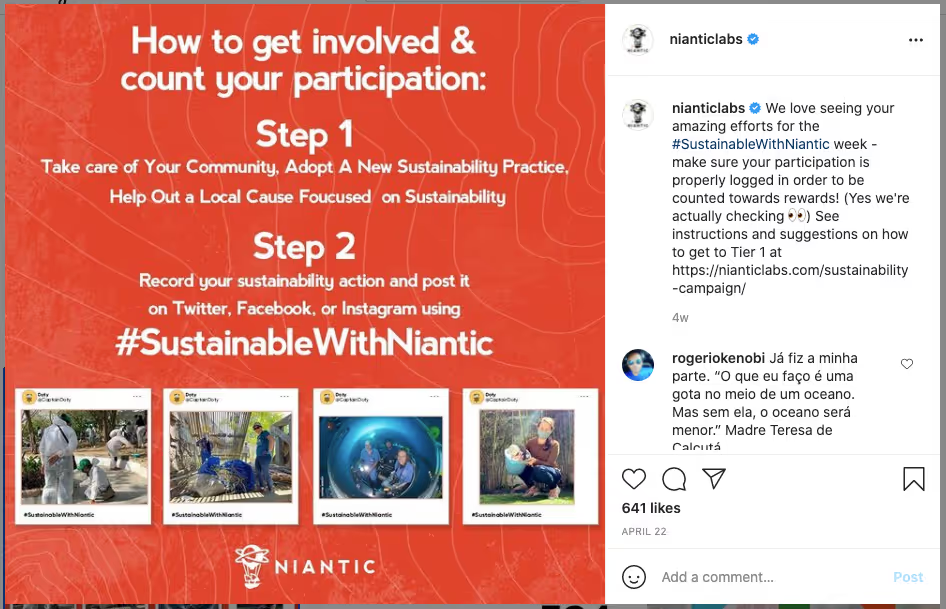
Besides generating UGC, the branded hashtag helped give exposure to Niantic while also emphasizing its eco-conscious brand values.
The consignment store thredUP hosted a weeklong #FashionMindfulness challenge, inviting users to share photos of their thrifted outfits.
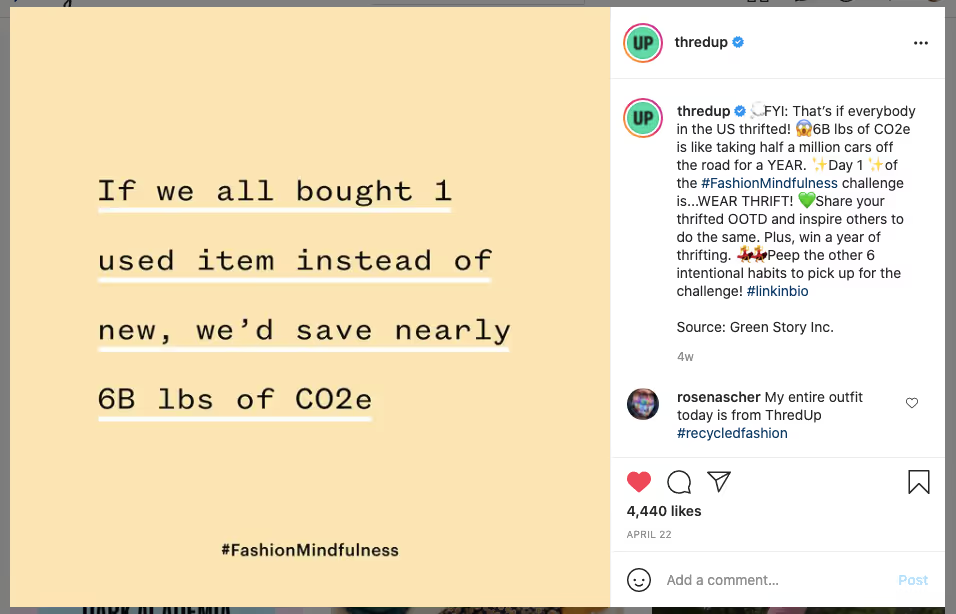
The campaign helped to spread brand awareness for thredUP while also emphasizing its eco-conscious brand values.
Here's one more example from Hootsuite, who ran a #IWorkFromHere contest series.
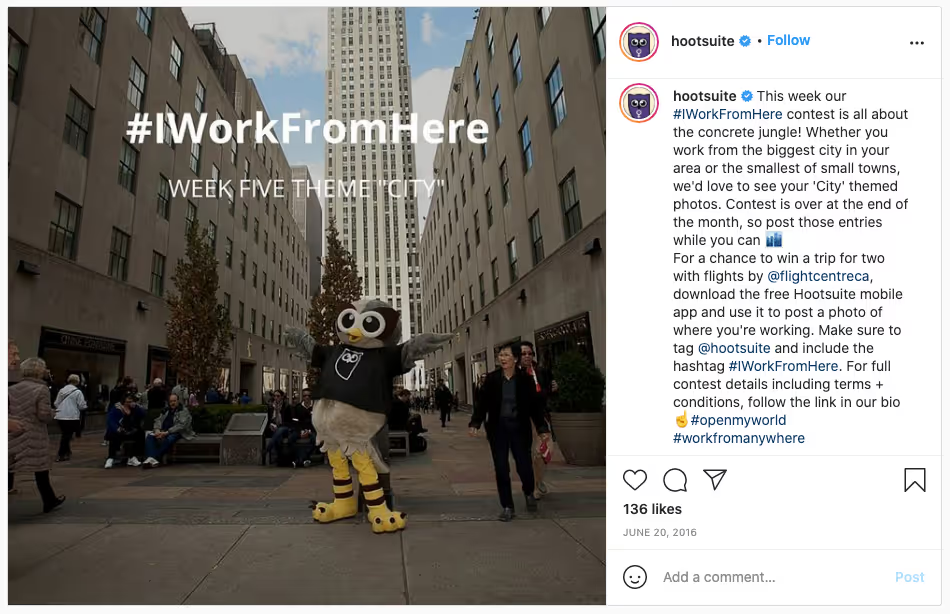
Every week for six weeks, the campaign invited users to share images of their workspace using Hootsuite’s free app. The grand prize: a trip for two to anywhere in the world.
What made this campaign a success? It appealed to one of Hootsuite’s target segments (nomadic social media professionals and remote workers from around the world). And since submitting a contest entry involved downloading Hootsuite’s app, it got people who weren’t already using the software to give it a chance.
Incentivize customers to leave reviews.
Research shows that users are more motivated to leave a review after a poor experience—so companies must be proactive in getting satisfied customers to share their experience. One way to do so is by offering a small gift or reward as an incentive.
That could be:
- Discount or credit for your product
- Free or exclusive resource
- Charitable donation
- Monetary gift, e.g., a Visa gift card
Make your review process frictionless.
If the review process seems complicated, users won’t participate, even with an incentive. Make it easier with these three tactics:
- Ask for reviews at an appropriate time. The right time depends on when users find value in your product. For example, it would make sense for TurboTax to ask customers for a review immediately after they’ve finished using its software to file taxes.
- Give users different options for leaving a review. Review platforms have different requirements for who can leave a review. For example, TrustPilot requires users to create an account, and Clutch requires a LinkedIn account. Give users multiple options with direct links so they can pick the easiest one for them.
- Provide some template language. In your ask, list your product’s key features and benefits. This way, users won’t have to think too deeply about what feedback to give.
How to leverage UGC
Getting users to create content is only half of a UGC strategy. Just as important is leveraging UGC for your wider content marketing efforts, generally through repurposing.
You can repurpose UGC in several ways:
- Website: Add reviews to your homepage or in a dedicated testimonials page. You can also quote reviews to showcase specific product features or explain different use cases. If users create things through your product, share these creations in blog posts or a curated gallery.
- Email: Use reviews as social proof in abandoned cart campaigns. You can also curate UGC as examples of what prospects could do with your product in promotional emails.
- Social media: Repost UGC on social channels to build a community. Remember to give credit to the original creators.
Outside of content marketing, UGC also helps with understanding customer sentiment about your product. Look for recurring themes—for instance, what features users are most likely to praise or complain about. Then use this insight to improve your product; this can generate even more positive UGC in the long run.
Examples of effective UGC
UGC/SEO – Yelp
Yelp’s content strategy is built on leveraging UGC to rank well in search results. It ranks for more than 28 million keywords, many of which are for business reviews.
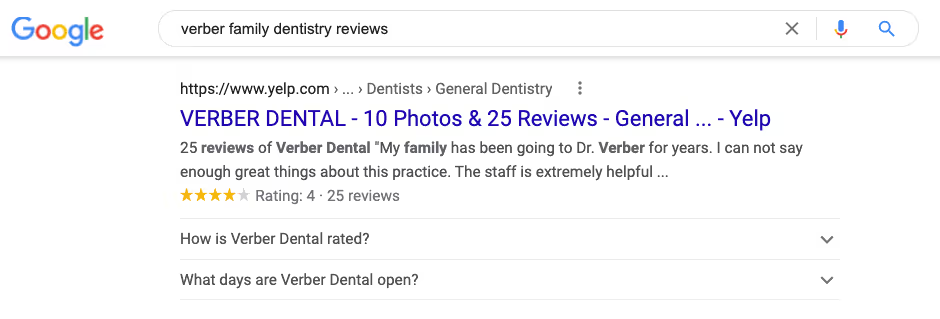
People leave reviews for a few reasons:
- They want to give kudos to great businesses.
- They want to warn others about bad businesses.
- They want to join the Yelp Elite Squad, an exclusive community of active users that Yelp rewards with events and freebies—Yelp’s way of incentivizing people to leave reviews.
There’s a good chance anyone wanting to learn about a local business or restaurant will land on Yelp because these review pages rank so highly in Google’s search results. The best part: most of these review pages weren’t created by Yelp but rather, real-life business customers.
UGC/virality – Adobe
Adobe runs multiple social media accounts for its various software products. For example, on Twitter alone, there’s @Creativecloud, @Photoshop, @Acrobat, and @AdobeDocCloud.
Each account engages with users in a targeted way. For example, Adobe’s Instagram accounts invite users to share projects according to their latest hashtag themes.
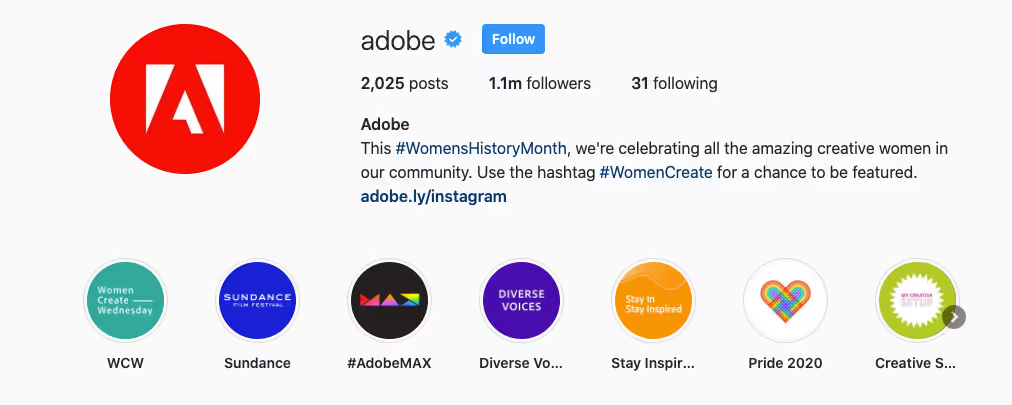
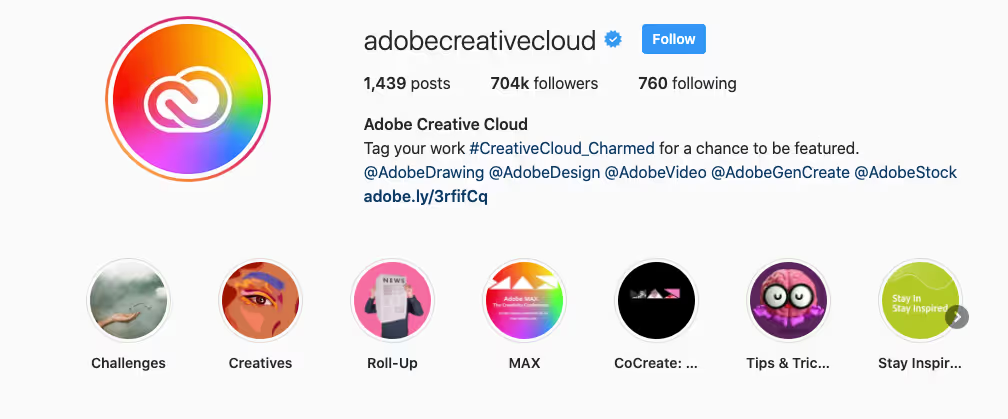
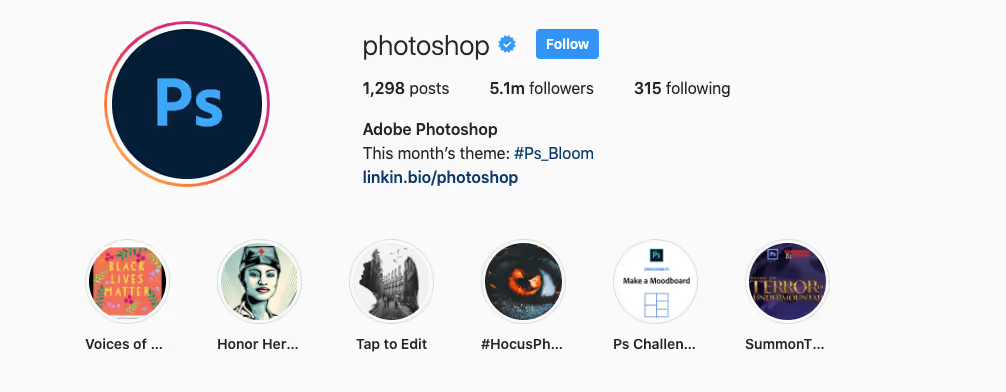
Some of these hashtags are branded, e.g., #CreativeCloud_Charmed and #Ps_Bloom. This helps to collect all tagged UGC but also drives brand awareness through each creator’s network.
Adobe capitalizes on this UGC by reposting it and giving credit to the original creators. Posts regularly receive thousands of likes and hundreds of comments.
Social media isn’t the only channel where Adobe leverages its user-created content, though. It also publishes “roundup” posts on its blog, showing off user projects for different themes.
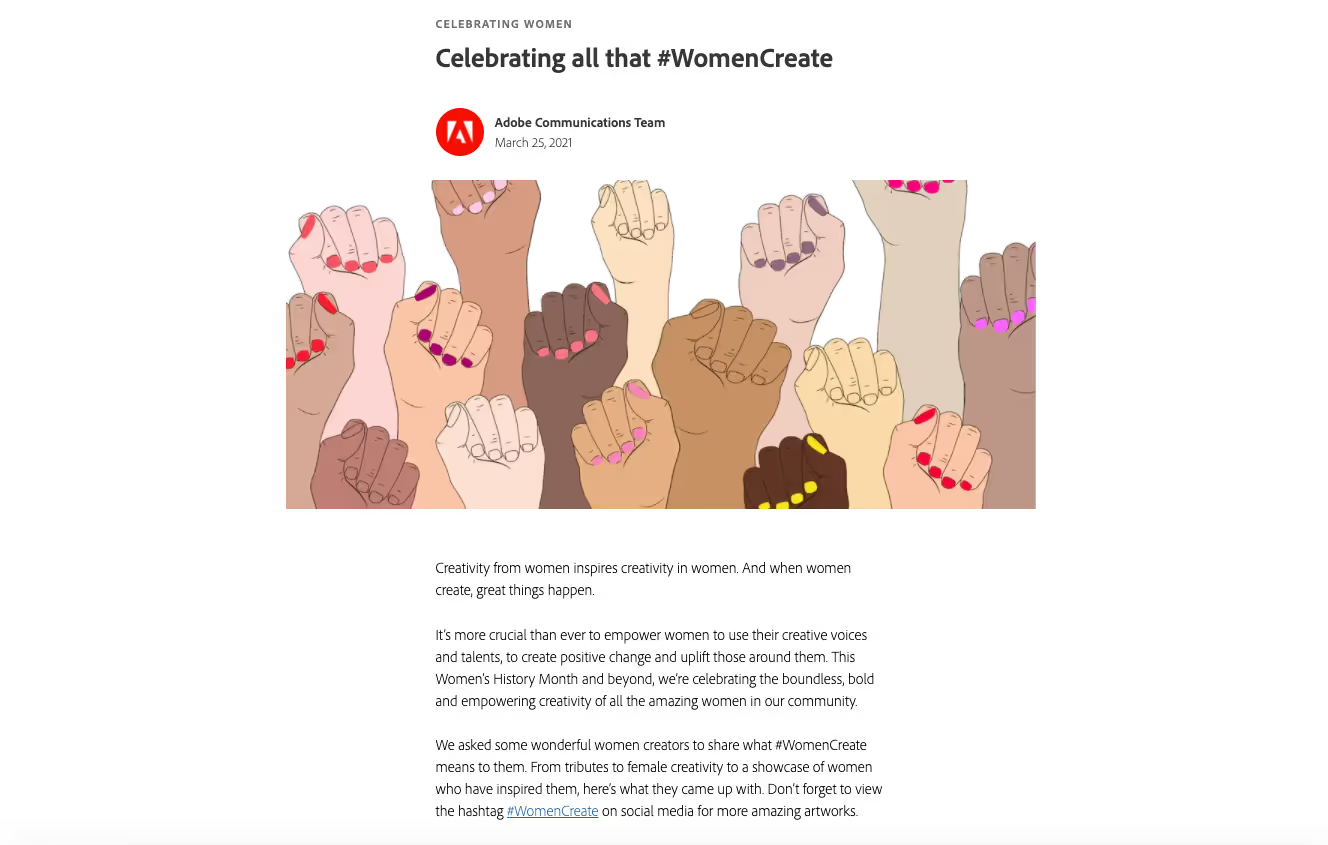
These blog posts aren’t keyword-optimized. The main point of them is to show off user-created content, which also creates a feedback loop:
- Users want to be featured by Adobe to grow their own reputations.
- Users create content and tag Adobe.
- Adobe features this UGC across multiple channels, driving more brand awareness.
- New users come across this content and want to be featured by Adobe.
UGC/SEO – G2
G2 is a business software marketplace and review site that helps businesses compare different software and IT services, and its website ranks for more than 1.5 million keywords. Though G2 does publish blog posts, a big part of its content strategy is customer reviews of software products. Nearly a third of its ranking keywords are for G2’s software review profiles.
How does the G2 team encourage UGC?
G2 partners with the software companies shown on its site and emails their customers to ask for reviews. Here’s one example, where G2 offers a $25 Amazon gift card for users to review the sales prospecting software Seamless.ai.
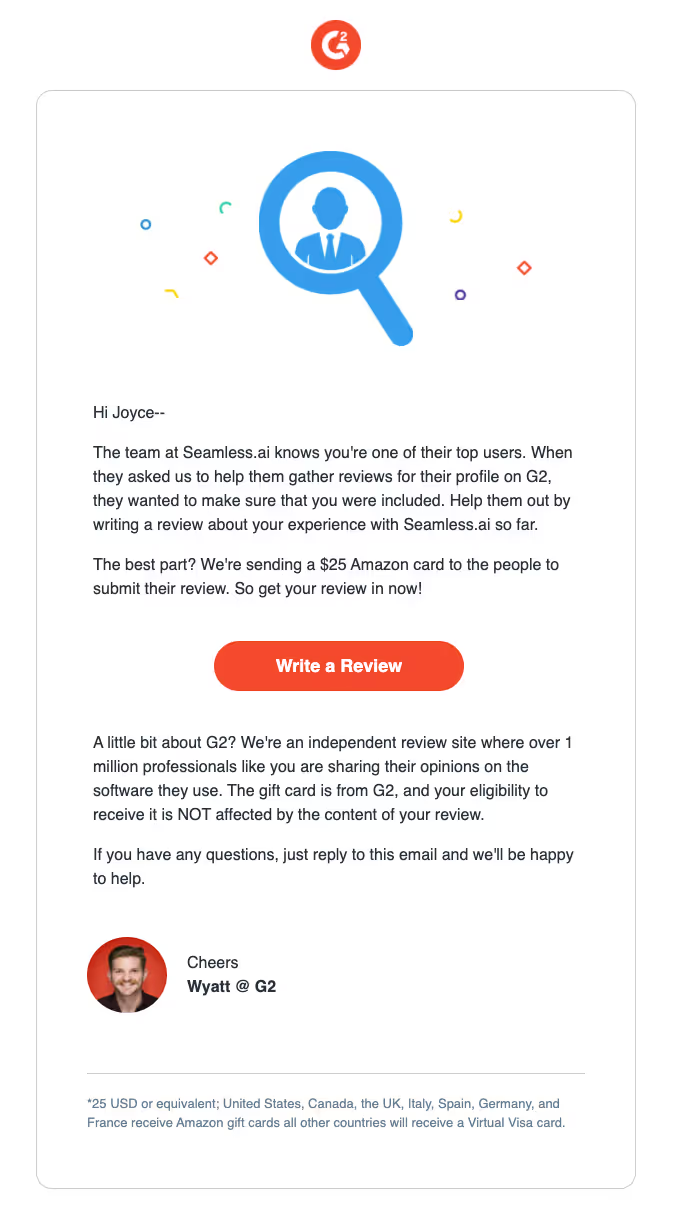
Looking at G2’s profile page about Seamless.ai, there are more than 475 user reviews—a lot more than on Capterra, TrustPilot, and other review sites. This helps the page’s strong SEO performance; it ranks #1 in Google’s search results for the phrase “seamless ai reviews” and #4 for “seamless ai”.

And it’s not just Seamless.ai that G2 collects user reviews for—G2 uses this strategy for hundreds of other software products.
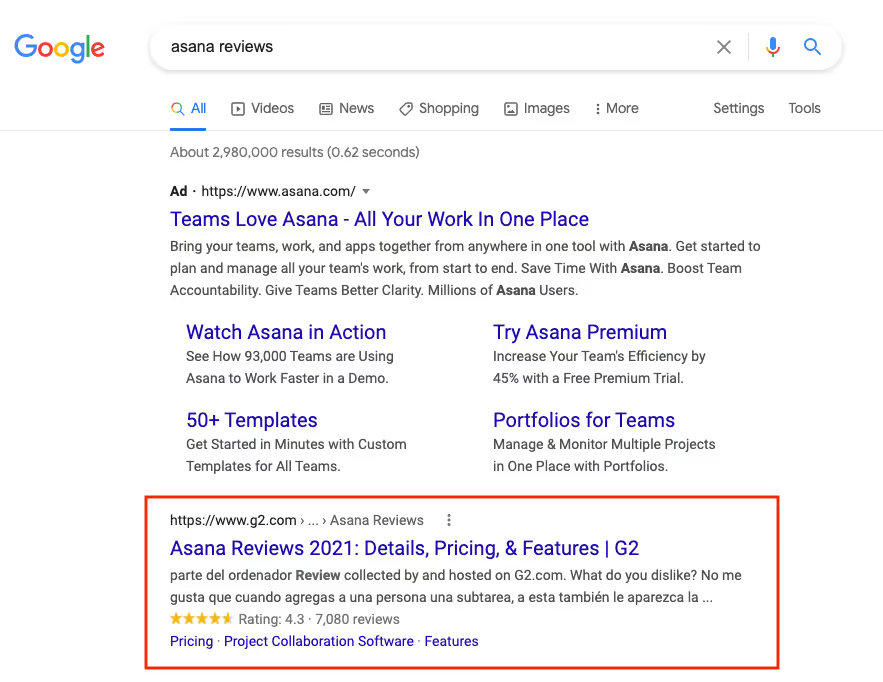
There’s a good chance anyone searching for reviews about a business software on Google will land on G2. The best part: most of these review pages weren’t created by G2 but rather, real-life software users.
UGC/SEO – Casper
Knowing that their products are big investments for customers, the online mattress company Casper made getting social proof a big part of its content strategy.
After customers buy a mattress, Casper emails them to ask for a review. To help customers write more detailed feedback, its form includes a few questions as prompts.

How does Casper use this UGC for SEO?
It features customer testimonials on a dedicated landing page that ranks #1 in search results for the keyword phrase “casper reviews”. The page includes customer reviews for each of its mattress products so users can quickly toggle between them for a quick snapshot of real people’s experiences.
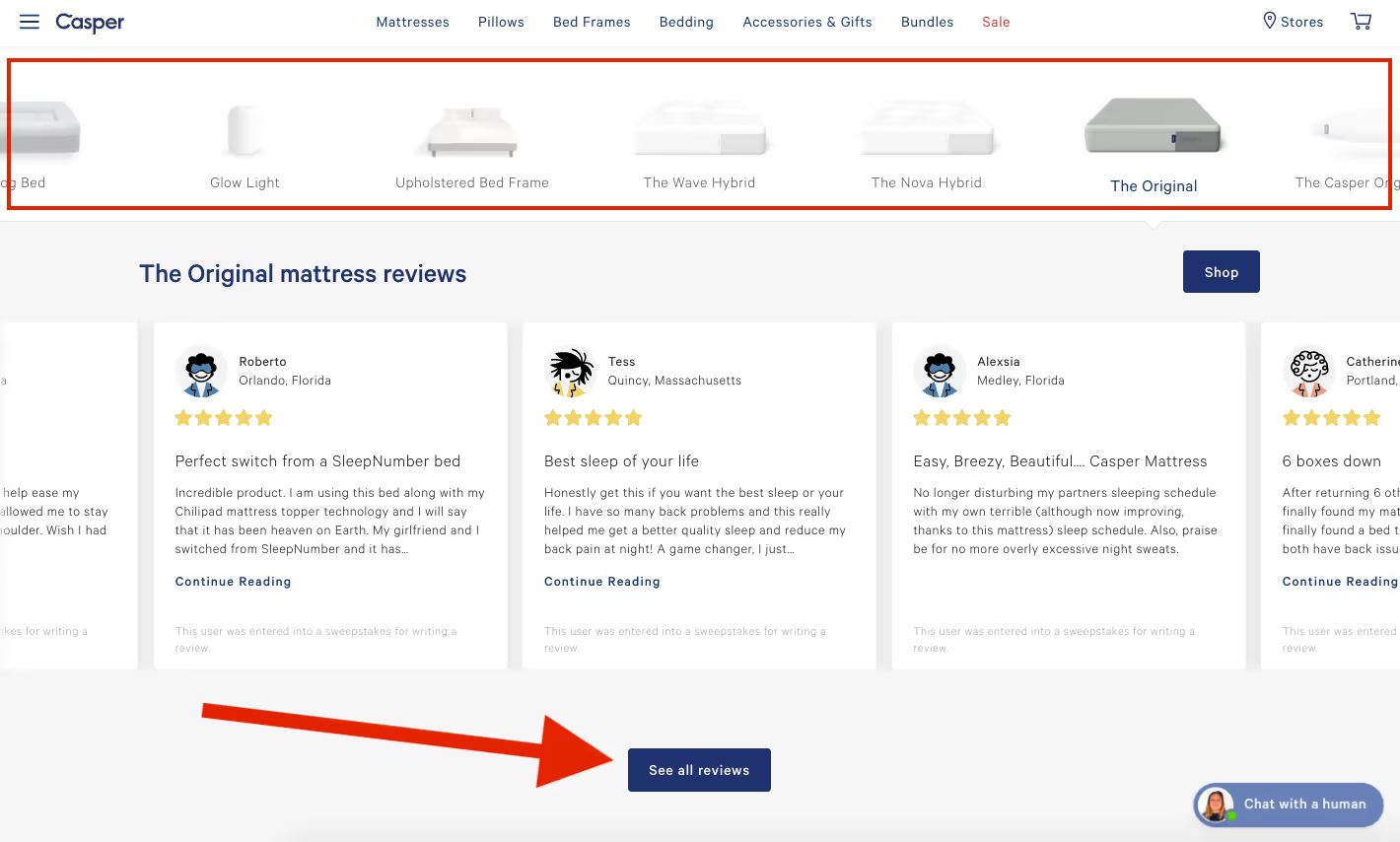
In case users want to explore one specific product further, they can also click “See all reviews”—which leads them to another page with all reviews for a single product.
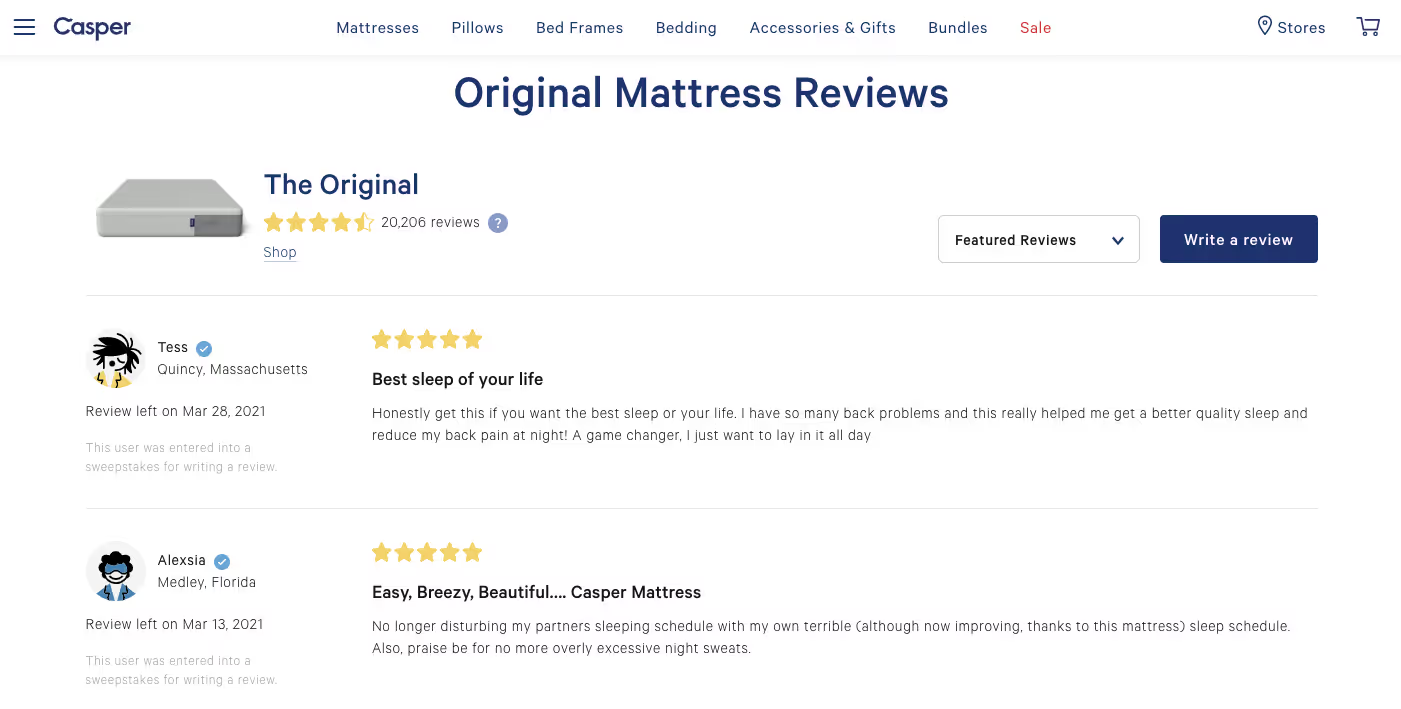
For many companies, branded review keywords often lead to third-party review sites rather than the brand being judged. However, creating these product-specific review pages puts Casper’s website at the top of search results for all of these keywords, including:
- casper platform bed reviews
- casper mattress protector review
- casper bed frame review
- casper nova hybrid review
UGC/virality – GoPro
GoPro’s action cameras make it the perfect candidate for a virality and UGC-based content strategy. Customers are naturally eager to share their footage, and GoPro also incentivizes them to do so by setting up Awards challenges.
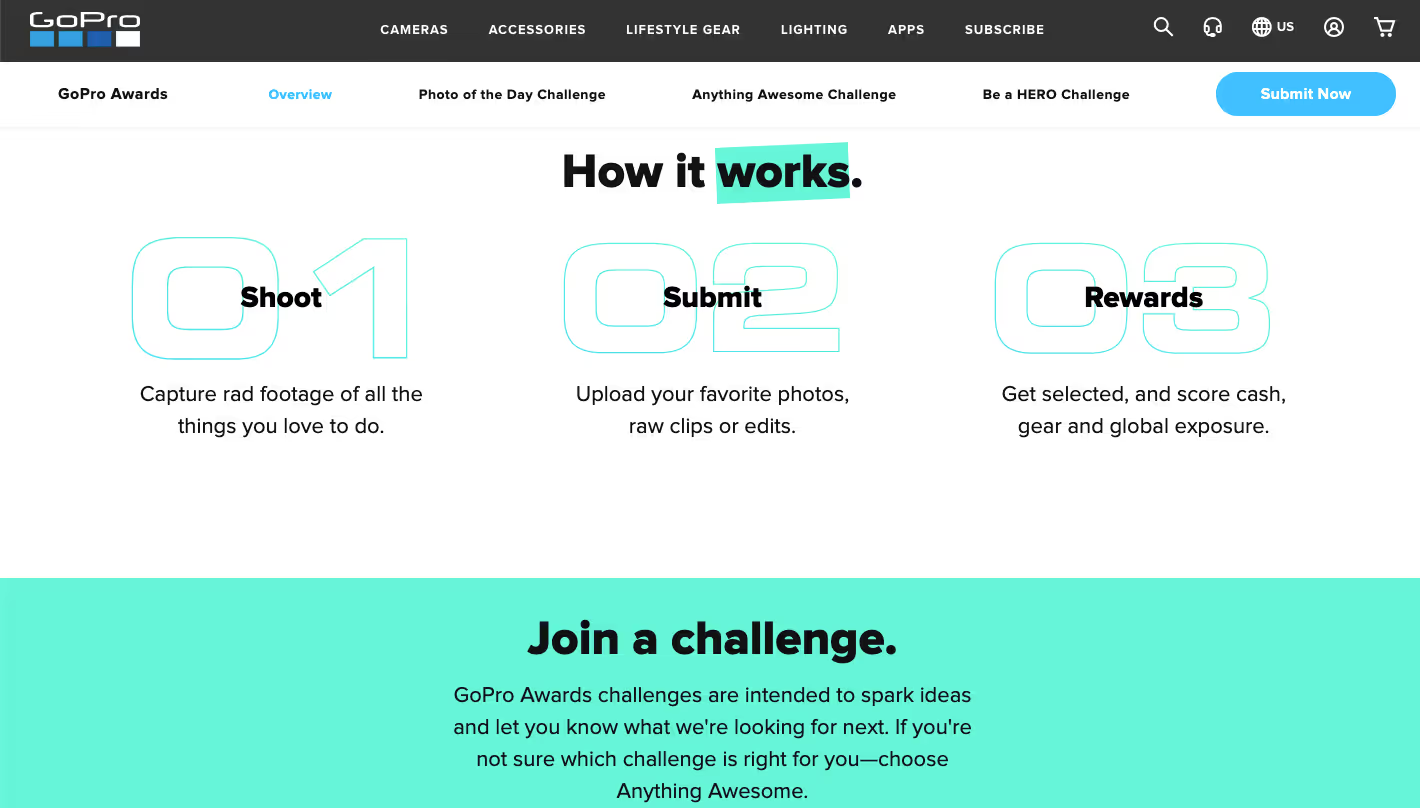
These challenges, split into different photo and video categories, offer cash prizes, free gear, and exposure. People submit their footage, which GoPro then repurposes for its blog, YouTube channel, and social media accounts.

This content regularly gets hundreds of thousands of views, likes, and comments. Even better, it creates a feedback loop of engagement:
- Users want to be featured by GoPro.
- So they create content and submit it to GoPro. They also post it on their own channels and tag GoPro.
- GoPro features this UGC across multiple channels, driving more brand awareness.
- New users come across this content and want to be featured.


